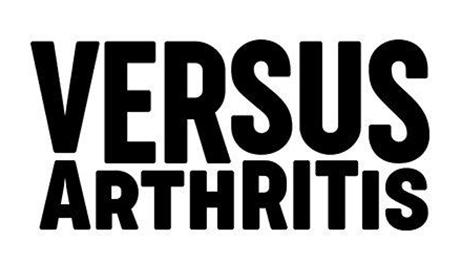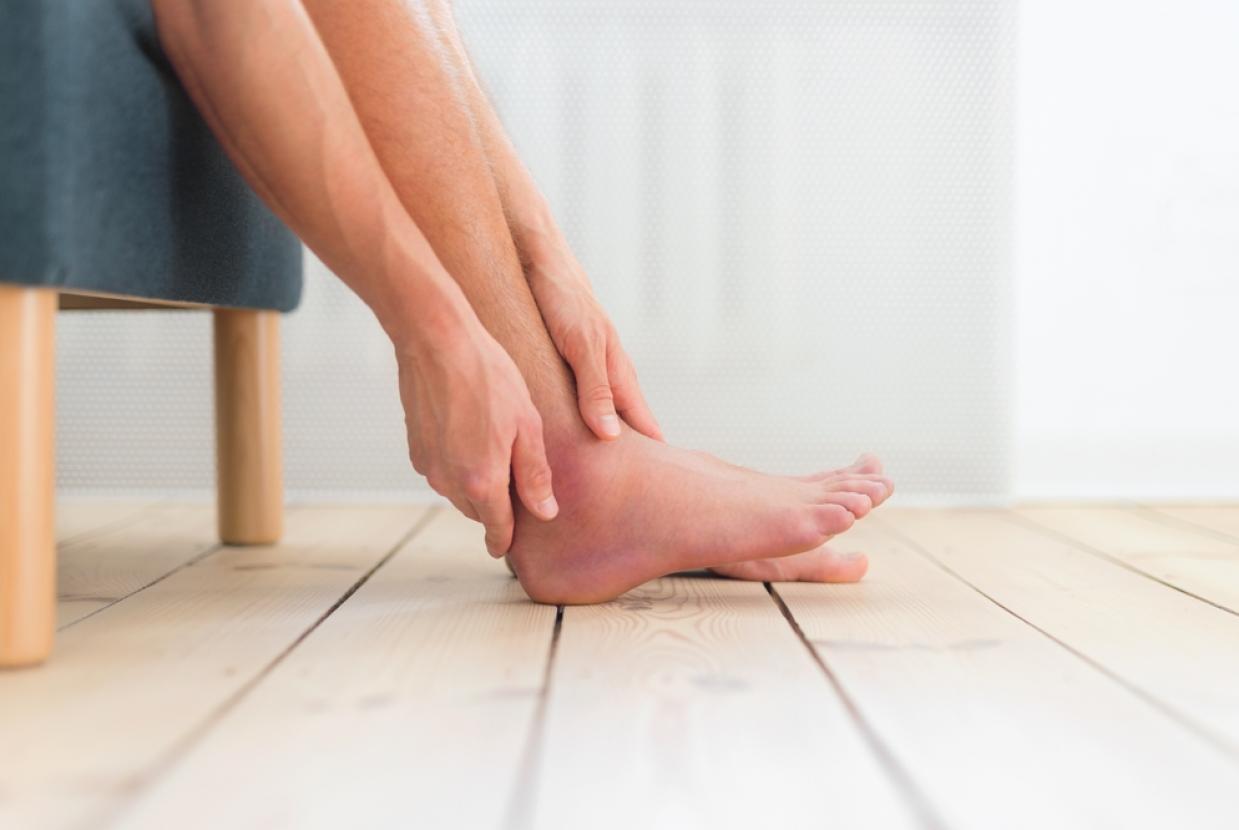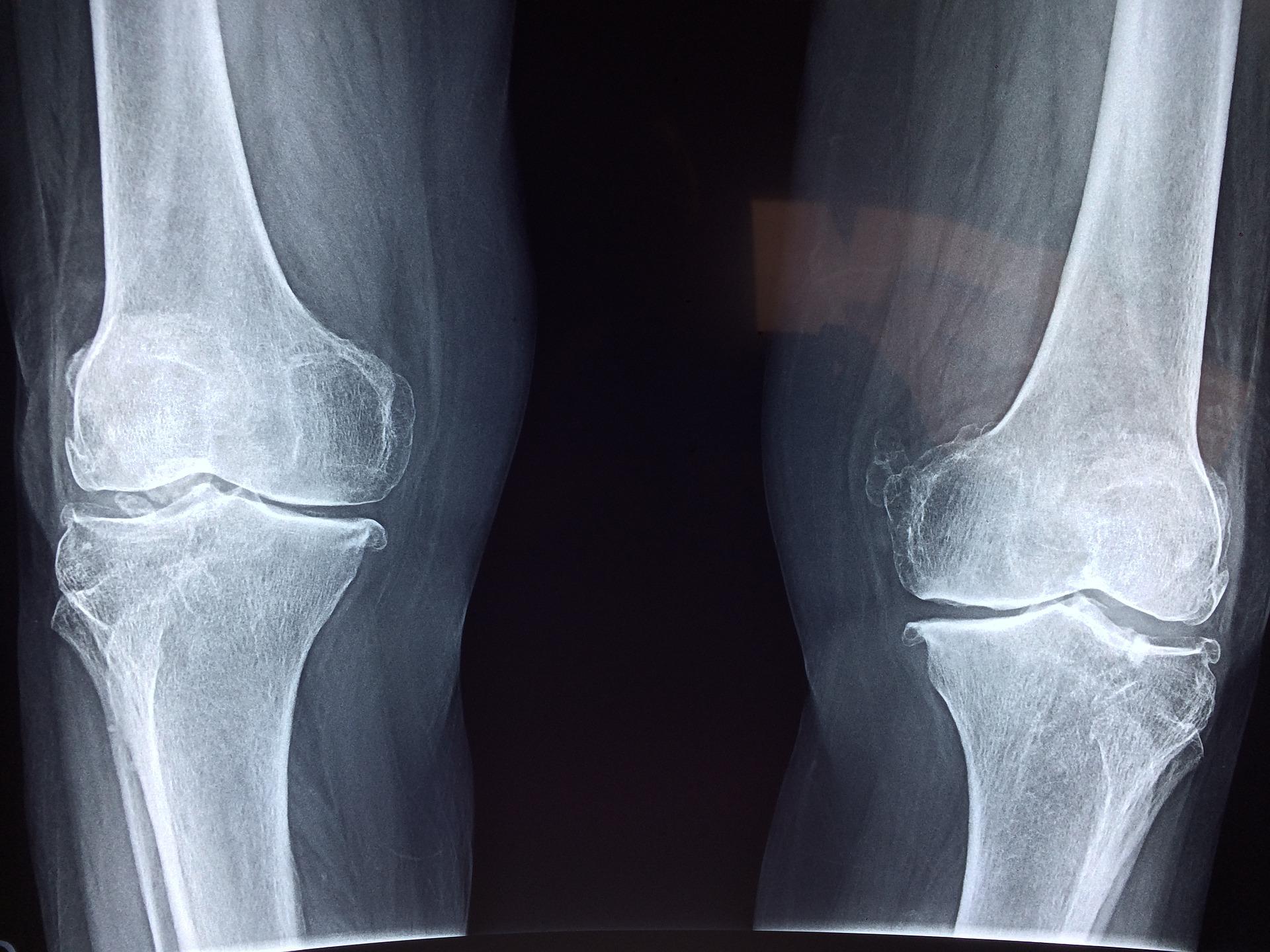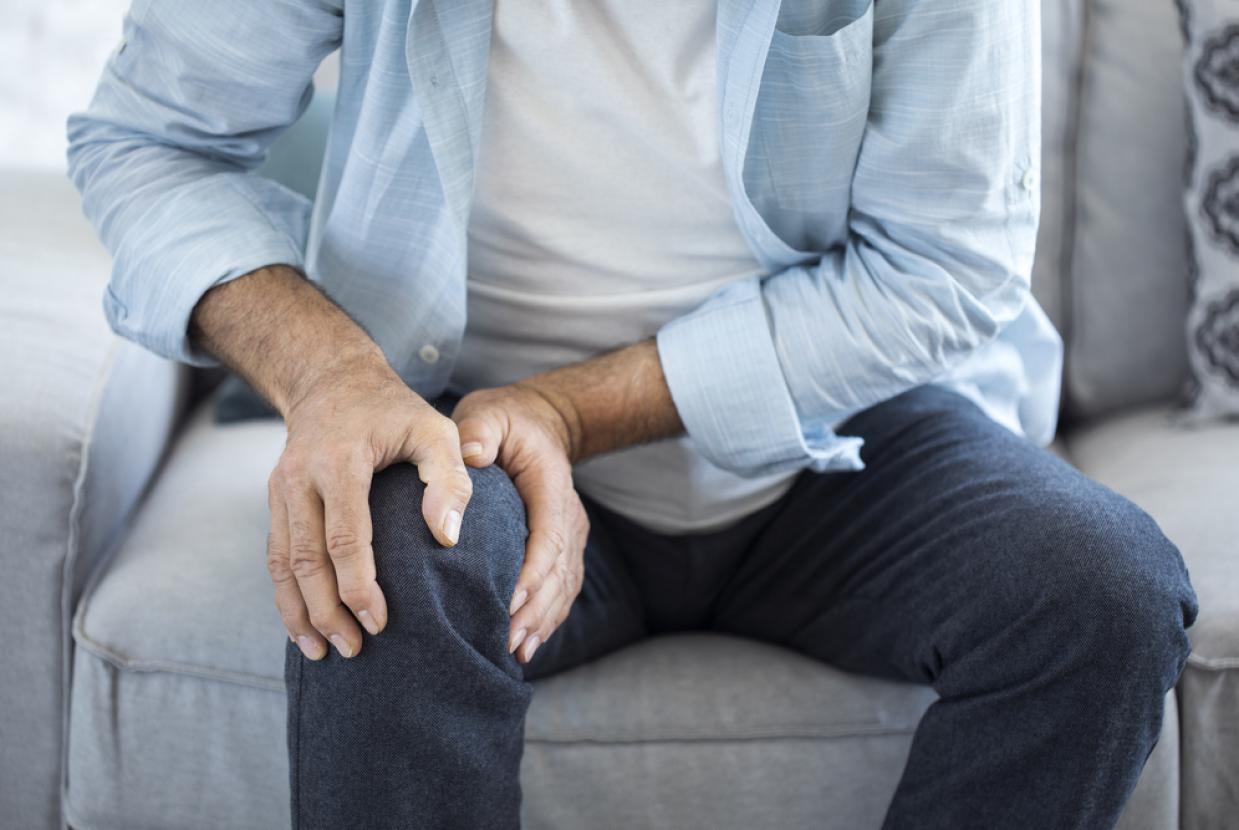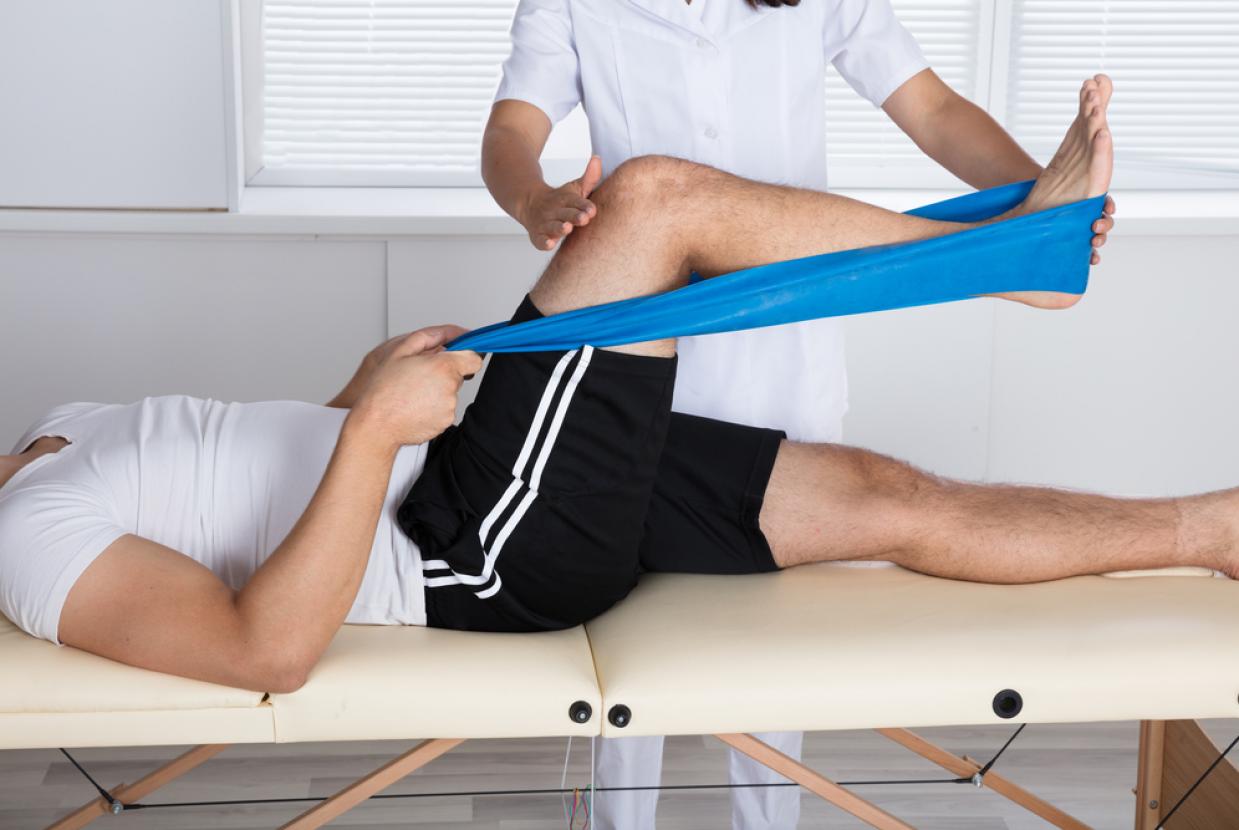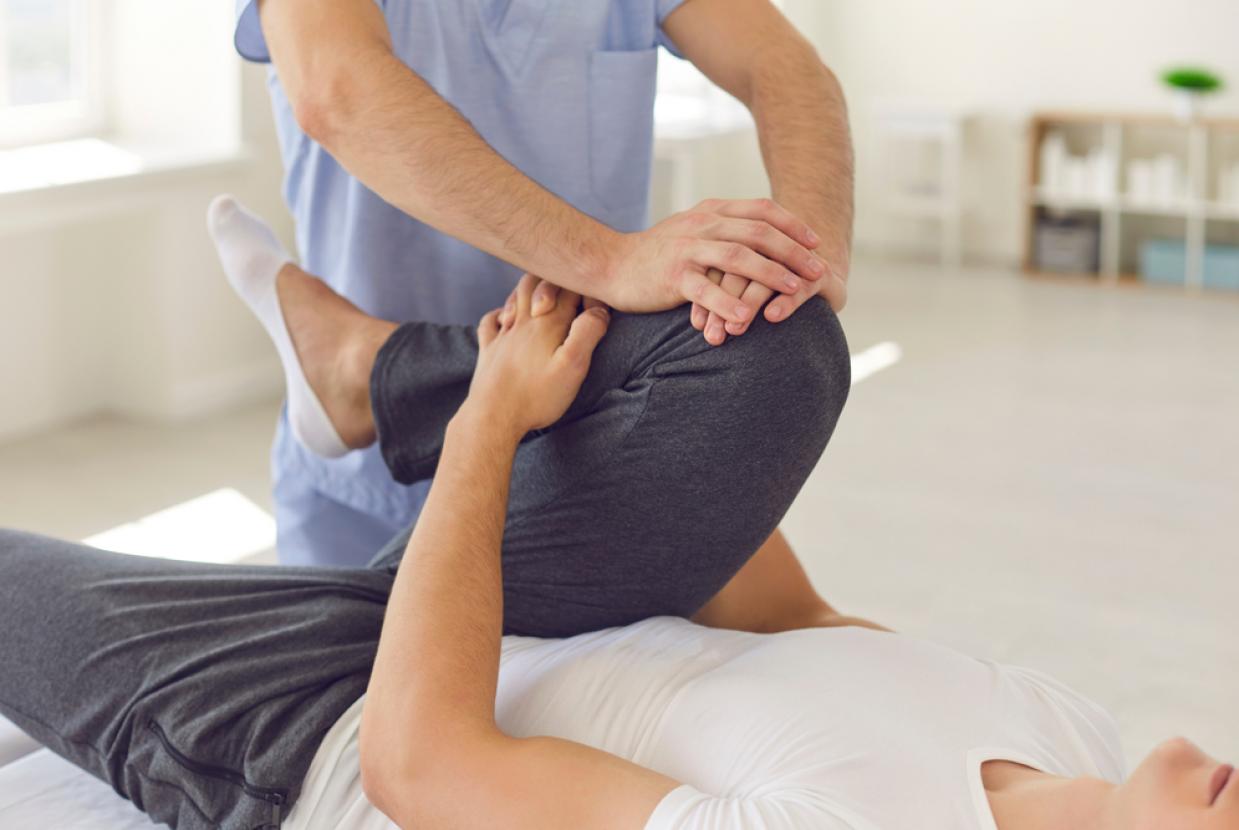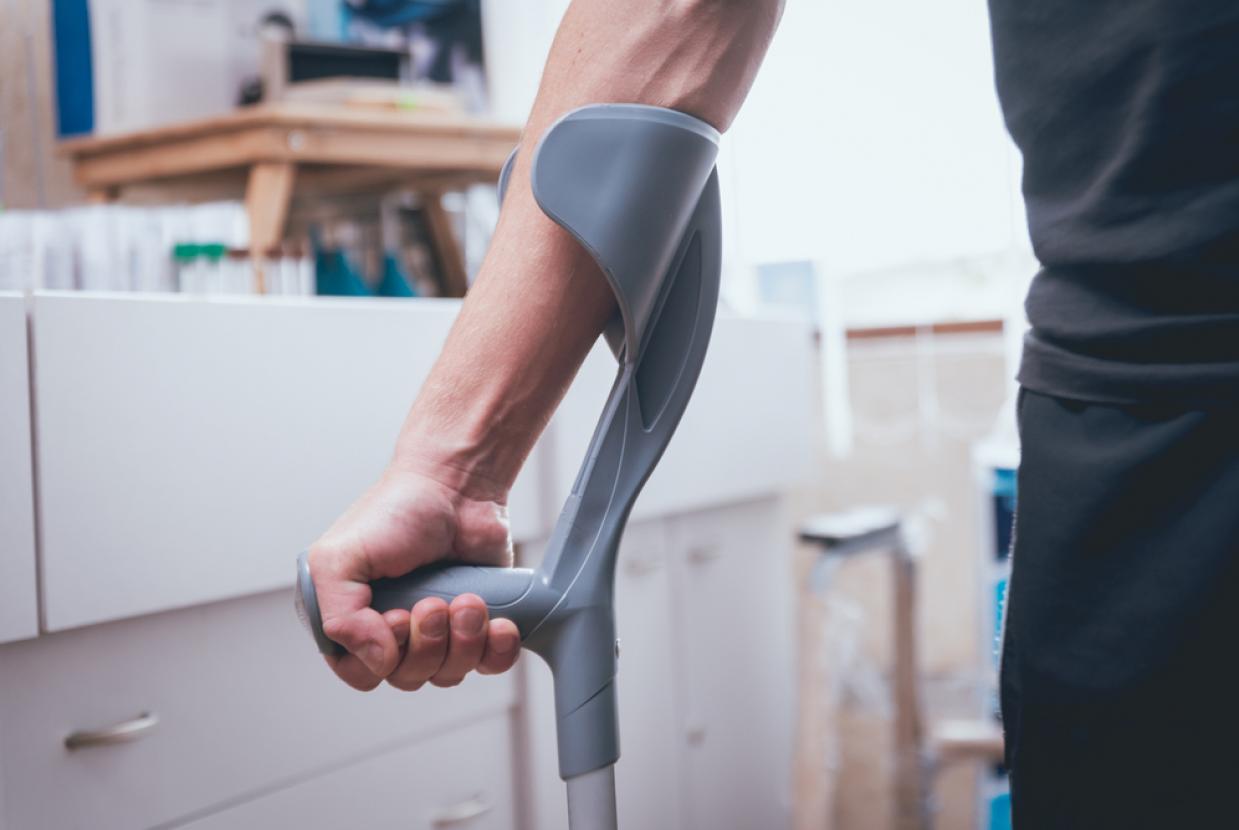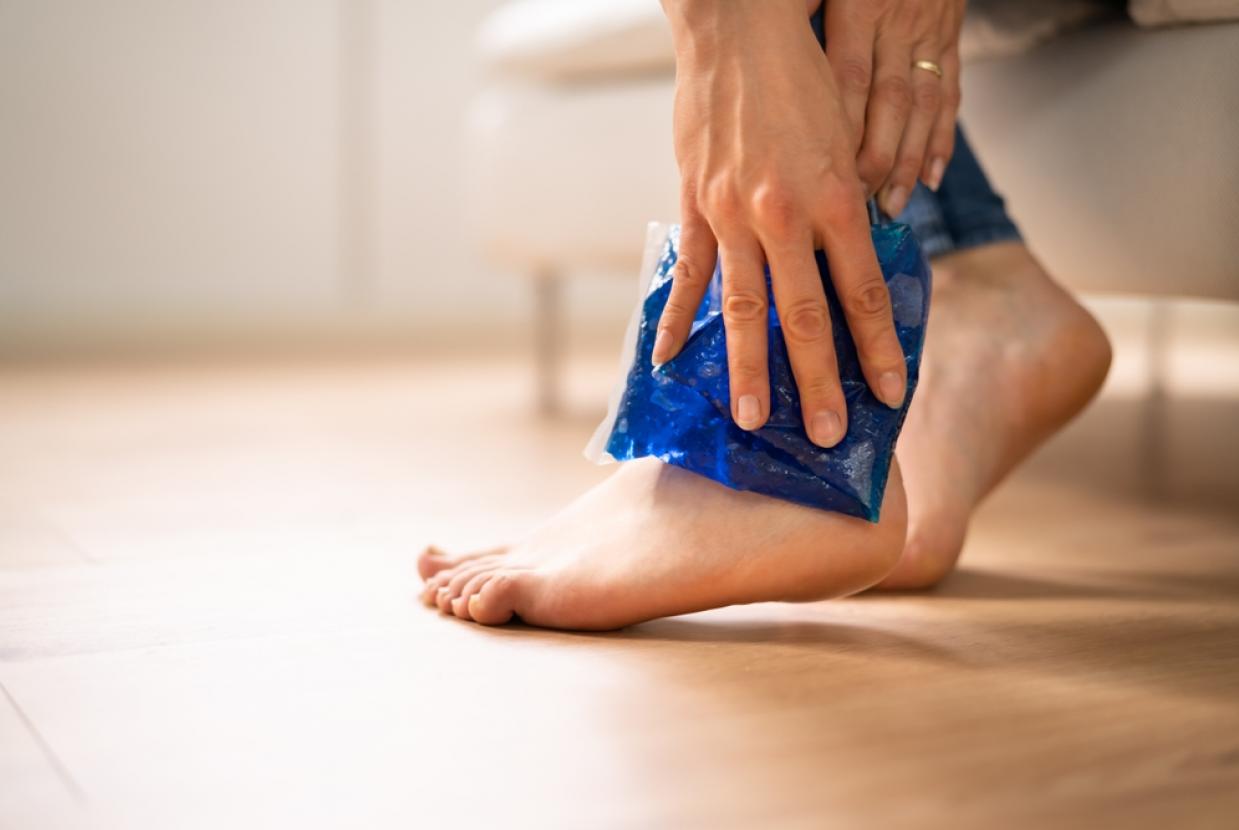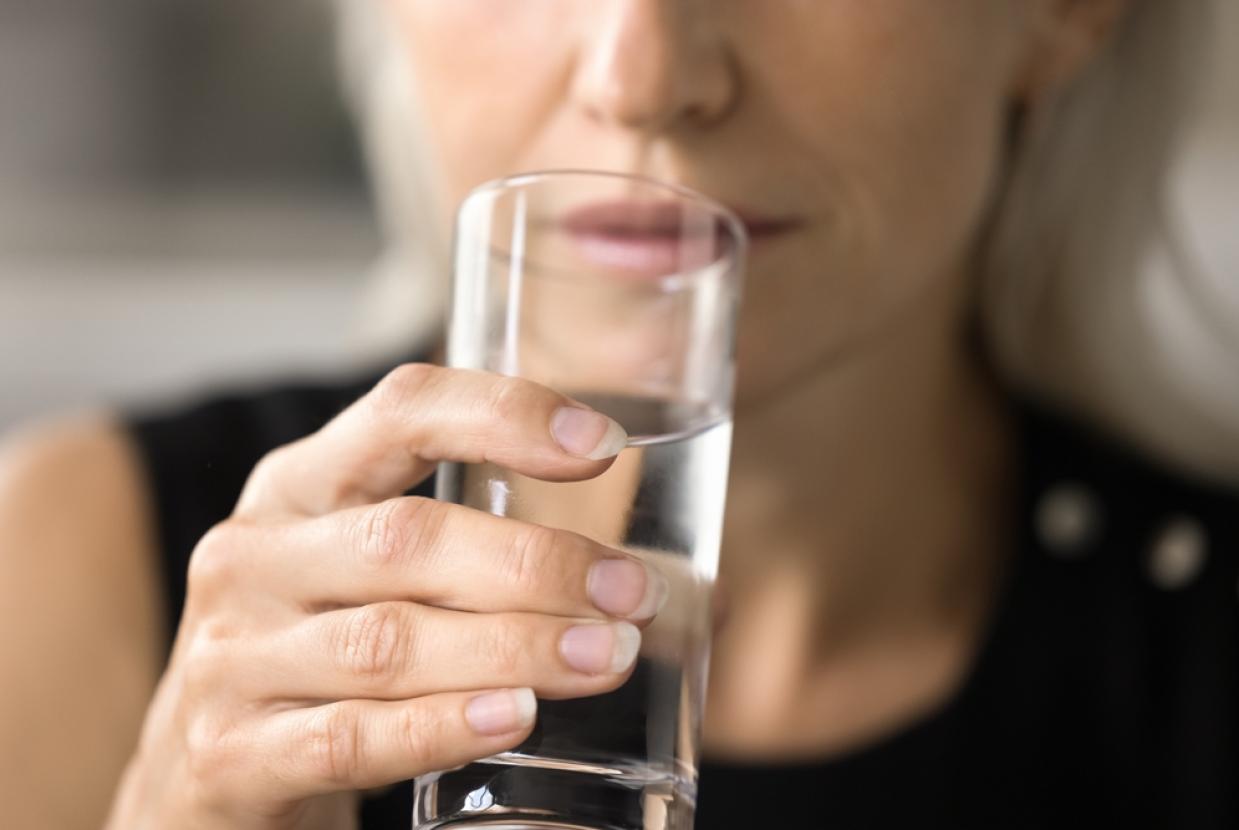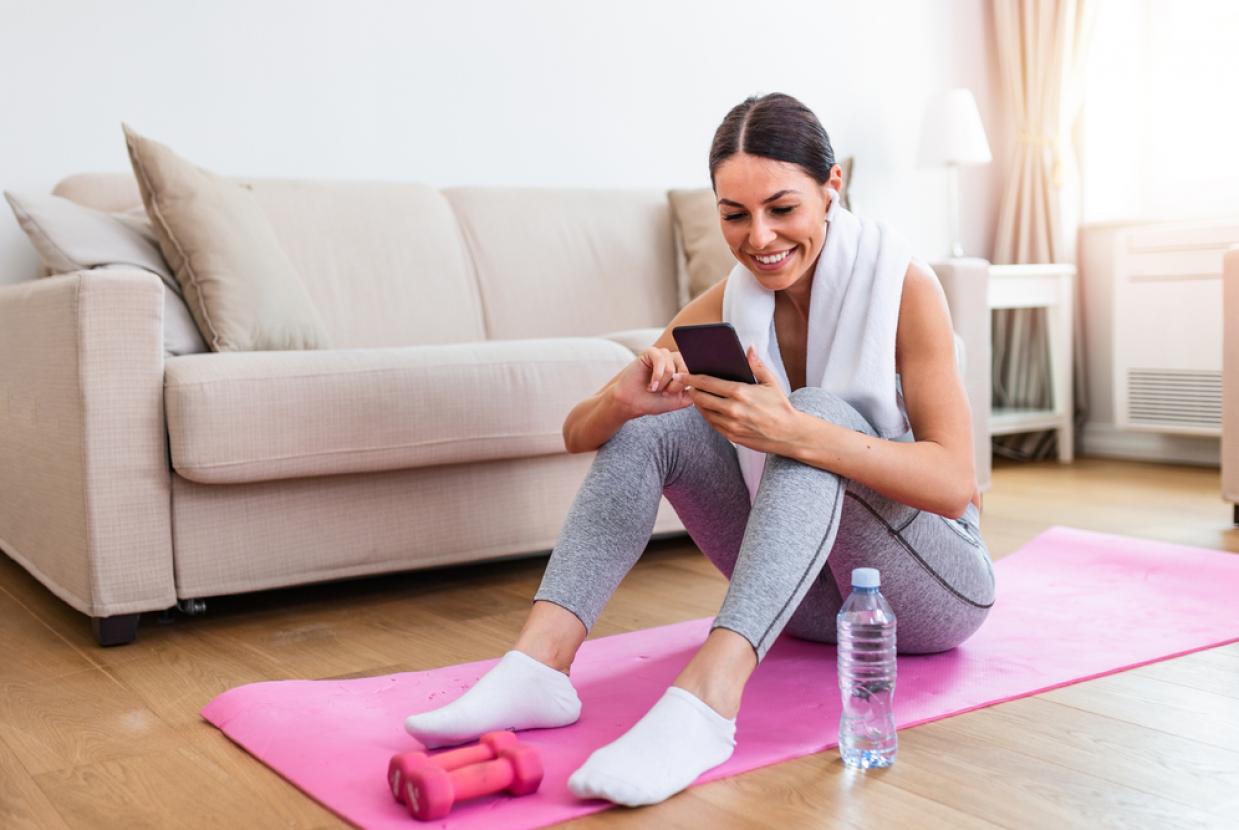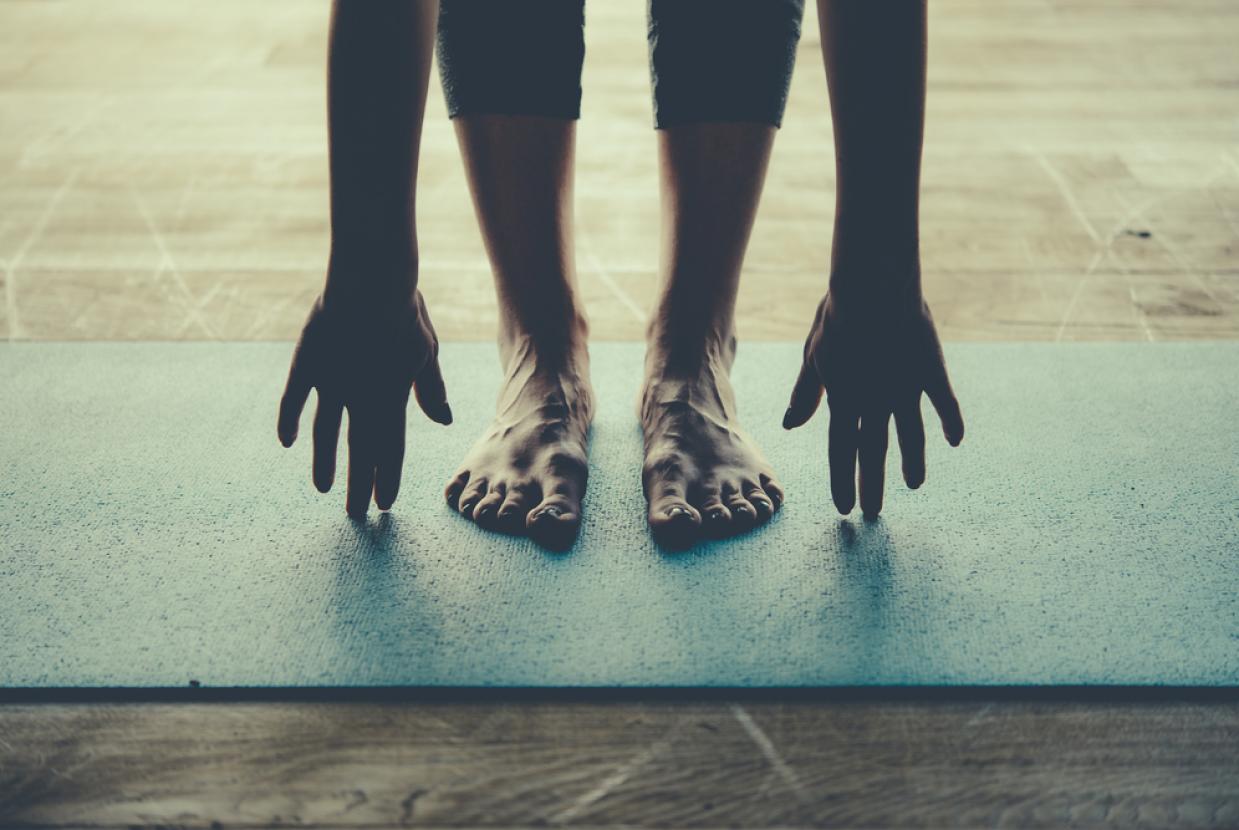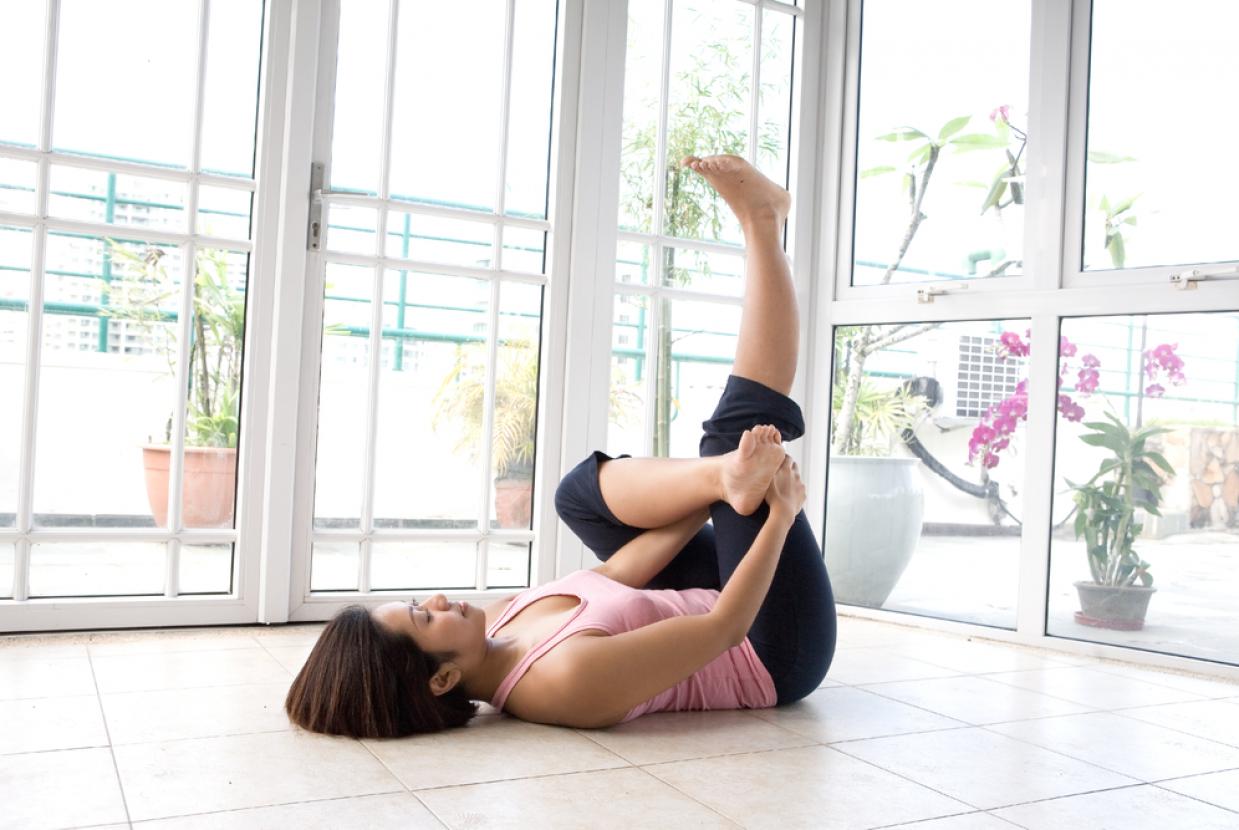Arthritis & Hydrotherapy
Arthritis/Back Pain/Joint PainIf you want to get more movement in your life, your healthcare team might suggest that you try hydrotherapy. Hydrotherapy (sometimes called aquatic therapy) involves doing exercises in a warm-water pool. We spoke to Helen Worsnup, Rheumatology Physiotherapist, to find out more.
A physiotherapist is an expert in assessing movement. They can provide tailored treatments to help ease your pain and improve your mobility.
What is hydrotherapy?
“Hydrotherapy is an individual exercise programme, in a warm-water pool,” explains Helen. Usually, the water temperature is around 33-35°C, which is much warmer than a typical swimming pool. What exercises you do will depend on what your goals and needs are.
For instance, you might:
- March on the spot.
- Walk along the pool.
- Do gentle turns using a long thin float called a woggle (noodle).
“Hydrotherapy uses the buoyancy of the water to make a movement easier or to resist a movement working the muscles more ,” Helen says.
“Let's say you have arthritis in the hip. You might use the buoyancy of the water to help improve your hip movement and using the resistance of the water to build up strength in the muscles around the hip.”
“Sometimes we use hydrotherapy short term. For example, if somebody's having a flare up, it can be quite helpful to help them get through it. Other times, it’s a stepping stone to help keep moving long term.” Most of the time it’s a starting point for the person to then continue at a local pool.
What are the benefits of hydrotherapy?
Helen says hydrotherapy can be helpful in several ways:
- The warmth of the water might help to relax and ease the pain in your joints, allowing you to exercise.
- The water can help support your weight, so it’s a low-impact activity. This means there is less pressure on your joints, so it might be a more comfortable exercise.
- The pressure of the water on your joints may help to reduce any swelling.
- You can build your muscle strength by doing exercises using floats or even just the resistance of the water.
- Exercising can boost your mental wellbeing and many people find hydrotherapy relaxing and fun.
- It’s a relatively safe way to practice balance exercises and reduce your risk of a fall.
- A physiotherapist will be able to provide tips and advice on how you can make these exercises a regular habit.
“Often, it's being able to start moving, which is one of the biggest benefits for many people with arthritis,” says Helen. “They feel that they’ve got a starting point, and it might be a stepping stone for them being able to increase the amount of activity they can do on dry land.
“The buoyancy of the water is quite helpful too. If you stand in the water and do a marching exercise, it's an awful lot easier when the buoyancy is lifting you up, so you get more range of movement.
“The other thing we can do is practice balance exercises in the water. We see some people who have osteoporosis too, so we could use hydrotherapy to improve their balance and reduce the risk of a fall. For instance, we could practice walking in water.”
Who can benefit from hydrotherapy?
Hydrotherapy is helpful however many of your joints are affected. It’s sometimes used if you’ve had joint replacement surgery or if you have back pain, ankylosing spondylitis, psoriatic arthritis and osteoarthritis. It can be used for other types of musculoskeletal conditions as well.
What can I expect from hydrotherapy?
Your physiotherapist may suggest taking part in hydrotherapy. The number of sessions and time in the pool will depend on your condition and your local service. It may be a weekly session of 30 minutes over 3-6 weeks.
These may be group sessions. However, the exercises will be tailored to you. You don’t need to be able to swim to take part in hydrotherapy, although it is a good form of exercise for people with arthritis.
What do I need to bring to hydrotherapy?
Your physiotherapist will let you know what you need to bring to the sessions. This will include:
- Clean, appropriate swimwear.
- Your own towel.
- Any medications you may need.
- A drink for afterwards.
“Some of our patients maybe don’t want to expose as much of their body, so you could wear leggings or a long sleeve,” says Helen. “If you do want to wear a long sleeve though, just make sure it’s fitted, rather than a floaty top.
“Make sure you’ve eaten before you’ve come. We also suggest bringing a drink for afterwards too.”
Are there any reasons why hydrotherapy might not be for me?
We know that fatigue can be a major hurdle for many people with arthritis. So, Helen says your physiotherapist may talk with you about your energy levels before suggesting hydrotherapy.
"We'll see if you have the capacity to do hydrotherapy or whether it’s too much for you at this stage,” she says. “We also need to be aware of any other health conditions you have.”
For instance, you should tell your physiotherapist if you have:
- a wound or skin infection.
- a virus or stomach upset.
- a raised temperature.
- breathing difficulties, angina or heart problems.
- a kidney condition.
- incontinence.
- a chlorine allergy.
- any conditions that aren't well controlled, such as diabetes, asthma or epilepsy.
In some cases, your physiotherapist just needs to know in advance so they can make special arrangements that you may need. But sometimes, they may advise against hydrotherapy.
How can I access hydrotherapy?
Anyone in your healthcare team should be able to refer you to an NHS physiotherapist if they think you’d benefit from hydrotherapy. In some parts of the UK, you can even refer yourself to a physiotherapist who will assess whether hydrotherapy is right for you.
Hydrotherapy is available on the NHS and some hospitals will have a hydrotherapy pool. However, the nearest pool may not be at your usual hospital so you might need to travel.
How can I adapt hydrotherapy to suit me?
Like any exercise, hydrotherapy can be adapted to suit you. “We know that, for our patients with arthritis, nothing is static. No day is the same,” says Helen. “So we’ll empower them to adjust the exercise to suit their needs.”
“For instance, how would you adapt during a flare? Or, if you’re doing well, how could you progress?"
Some physiotherapists may also offer you a choice of when you could attend hydrotherapy, so it’s worth thinking about your energy levels and pacing yourself.
"If you’ve got a choice of sessions, find a time that works best for you,” Helen says. “It might be that you really struggle in the morning so, to get up so a 9:00am appointment may be difficult. If that’s the case, maybe it’d be better to go in the afternoon.
“I also ask my patients to look at what else they’re doing that day. Some of our patients will go to hydrotherapy and go about their usual day afterwards. But, for others, that can be difficult. They might not want to do their weekly shopping or look after their grandchildren afterwards. It’s about using pacing to set yourself up for success.”


